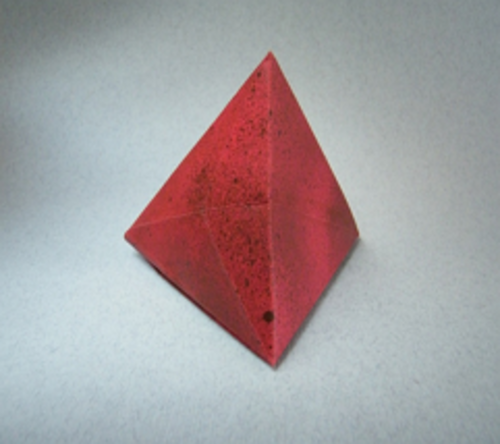Triangle defined by one point III
 Point
G
(
1
,
2
,
3
)
is a centroid of a triangle. Vertices of a triangle are on the axes of the coordinate system.
Point
G
(
1
,
2
,
3
)
is a centroid of a triangle. Vertices of a triangle are on the axes of the coordinate system.
Find area of the triangle.
Image Credit: Flickr Rui Roda .
The answer is 31.5.
This section requires Javascript.
You are seeing this because something didn't load right. We suggest you, (a) try
refreshing the page, (b) enabling javascript if it is disabled on your browser and,
finally, (c)
loading the
non-javascript version of this page
. We're sorry about the hassle.
2 solutions
First time I've ever heard of "de Gua's theorem" But, being that it's an 3D extension of Pythagorean's theorem, I think it's easier to understand if written in this way
( 2 1 3 ⋅ 6 ) 2 + ( 2 1 6 ⋅ 9 ) 2 + ( 2 1 9 ⋅ 3 ) 2 = 2 6 3 = 3 1 . 5
Log in to reply
You are right. I copied it to my solution. You learn something new on Brilliant everyday.
Oh, I used Heron's formula, once I knew about the coordinates. De Gua looks a lot simpler !
how we know that a = 3* 1=3 b= 2* 3 = 6 c=3 * 3= 9
I'll use some knowledge about vector.
First, centroid can be found by calculating the average of vertice's coordinate. So, the coordinate of the three vertice are ( 3 , 0 , 0 ) , ( 0 , 6 , 0 ) , ( 0 , 0 , 9 )
Then, let's go through vector!, the two vectors that compose two sides of the triangle are u = ( − 3 , 6 , 0 ) and v ( − 3 , 0 , 9 )
Hence, the area of the triangle is 2 1 ∣ u × v ∣ = 2 9 ∣ ∣ ∣ 6 i ^ + 3 j ^ + 2 k ^ ∣ ∣ ∣
= 2 9 × 4 9 = 2 6 3 = 3 1 . 5
Let A ( a , 0 , 0 ) , B ( 0 , b , 0 ) , C ( 0 , 0 , c ) denote vertices of the triangle. The centroid divides each median into parts in the ratio 2:1, with the centroid being twice as close to the midpoint of a side as it is to the opposite vertex. That same ratio holds for the projection of the median onto an axis on which the median vertex lies. Therefore:
a = 3 × 1 = 3 , b = 2 × 3 = 6 , c = 3 × 3 = 9 .
By de Gua's theorem
△ A B C = ( 2 1 3 ⋅ 6 ) 2 + ( 2 1 6 ⋅ 9 ) 2 + ( 2 1 9 ⋅ 3 ) 2 = 2 6 3 = 3 1 . 5